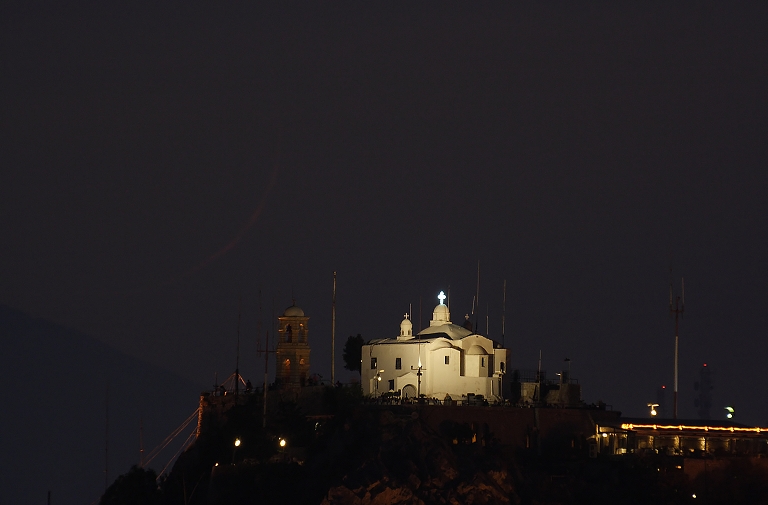
One of the most challenging and demanding observational and photographical projects one may undertake involves the new moon or, to be more
specific, the very thin and young crescent immediately after the new moon. Such a project also has religious ramifications, for certain
religions and cultures place a heavy emphasis on the citing of the new moon whereby it determines the start of the new (lunar) month which
begins the following day and, in some instances, also establishes
the end of holidays (ex. Ramadan).
The record for sighting the very young crescent moon with the aid of optics such as binoculars or a telescope is under 12 hours (see
here)
whereas the record for a sighting without any optical aid(s) is 14.5 to 15.5 hours (see
here and
here). Perhaps the best time to attempt such an exercise is during
spring when both the sun and moon traverse the ecliptic in a nearly perpendicular manner relative to the horizon, thus allowing for the maximum
possible elongation between them near sunset when the sun slowly begins to dip below the horizon and the young crescent moon is still above it
in the western (or northwestern) sky. This hunt is further aided if the moon is around perigee. For two excellent online articles, the interested
reader is referred to the Sky&Telescope website
here and
here.
Note: The very young lunar crescent illustrated below was captured from the grounds of the University of Athens on
the southeastern outskirts of Athens. With a new moon predicted for June 22 at 22:35 UT+3, the image below represents the moon's phase 23 hours
and 45 seconds past new. Its distance of 358,118 km is extremely close to the minimum distance the moon can lie from the earth owing to its
slightly eccentric orbit, thus making this sliver crescent also a perigee young moon. Due to poor transparency thanks to atmospheric haze and
thin low-level clouds, the crescent moon could not be located using either binoculars or when looking through the telescope and, in fact, was
not even visible on the camera's LCD screen when the photo was taken. Earlier calculations for azimuth and altitude suggested the presence of
this very thin crescent from the proposed shooting location and which proved to be correct.
Lycabettus Hill ("Hill of the Wolves") lying at the center of Athens is approximately 280 meters high and is the highest of the seven hills
which characterize the Greek capital. At the top of the hill, one will find the Church of Saint George and which is a very popular tourist
attraction during summers for viewing the setting sun in the distance. The image below was taken from the grounds of the University of Athens
and at a distance of 3420 meters so as to purposely match the apparent size (diameter) of the Church of Saint George with that of the setting
new moon. The setting moon in the image below is just under 1.5 degrees above the horizon.
Note: The setting new moon also during perigee and slightly over 23 hours was captured in 2008 near the impressive
grounds of the Temple of Poseidon and is available
here.
|
Body: Moon Mass: 0.0123 x Earth Mean Eq Diameter: 0.2719 x Earth Distance: 358,118 km Sidereal Rev: 27d 07h 43m 11s Age: 0d 23h 01m Phase: 1.4° Diameter: 33.39' Magnitude: -12.6 Rukl: N/A |
 |
Date: June 23, 2009 21:35:43 UT+3 Location: Athens, Greece (37.9999° N, 23.7774° E) Equipment: Takahashi FSQ 106/f5 AP 2x Conv Barlow Canon EOS 350D Baader UV/IR-Cut Filter Exposure: 1 x 1.3 sec ISO 400 RAW Image Format 3456x2304 image size Auto Mode Software: Digital Photo Pro V2.1.1.4 Photoshop CS2 Processing: Resampling JPG Compression |